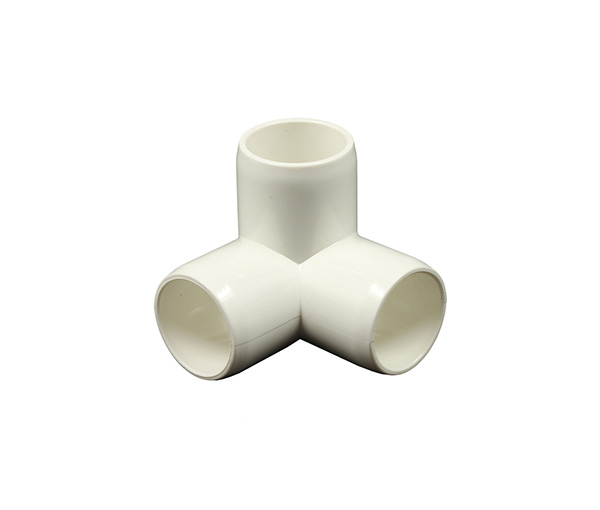1. The plasticization of PVC pipes and fittings
must be high, and the plasticization should be as high as possible. As long as the decomposition does not change color, the plasticization can be properly improved, making the relative high point of the material’s dilute softness.
2. The cutting pressure of PVC pipes and pipe fittings
should be placed at the die position as far as possible. When the thickness of PVC pipes and pipe fittings increases, the temperature of confluence increases relatively, which can increase the die pressure.
3. PVC pipes and pipe fittings
should be relatively good for stability. It is not allowed to use cheap stabilizers, because the general lubrication used for poor stability is too poor. And the content is relatively large.
4. Reduce the lubrication fraction as much as possible, so that when the product is deformed when encountering external force, the PVC molecular chain connection is not easy to be damaged.
5. Do not use too high content of CPE. When the amount of CPE increases, it will affect the hardness of the pipe.
6. PVC pipes and pipe fittings are effective straight sections, which should be 2.5 times lower. In this way, the pressure density can be increased a lot.
7. The front end of the effective straight section of PVC pipes and fittings can increase the secondary pressure chamber.
8. For PVC pipes and pipe fittings, the hardness is very high, and the tear strength obviously coexists. Calcium powder should not exceed 50-60 parts as much as possible.
9. Use as little internal lubrication as possible, or use macromolecular structure lubrication
2、 Amount of material put in
1. To improve the mixing degree in a short time, it is required that the material should be as close to the resin flow as possible.
2. The precipitation volume of calcium powder shall be more than 2.7 and the mesh number shall be more than 1000. Considering the hardness and tear strength, the calcium powder shall not be more than 25. The strength can be improved by adding a proper amount of nano calcium;
3. The selection of stabilizer is very important. Stabilizers (lead salt stabilizers, calcium zinc stabilizers, etc.) should have good thermal stability, internal and external lubrication balance and stability. Do not use cheap stabilizers.
Stable lead content is high (not only reflected by three salts and lead oxide), lubrication is close to profile stability. Dosage not more than 3.2 parts
4. The amount of CPE should not be too large, which will affect the hardness of the pipeline; CPE should be of high molecular weight, chlorine content standard, no more than 35% and no residue; the amount is 6-7
5. The lubrication must be good. PE wax is used for the external slip difference, and the total amount is 1.5 phr.
Lubricating oil should not be used badly. It must be used well. Polyethylene wax is the best choice. The total dosage is about 1.5 phr, which should not be too much, so that the PVC molecular chain connection is not easy to be damaged when the product encounters external force during deformation;
6. If the stability is not enough, a small amount of metal soap can be compensated.
7. Titanium dioxide will affect the tear strength and select the fine particle size.
8. CPE + ACR system, ACR + mAbs system or CPE + mAbs system can be selected for transformation.
Note: according to the general dosage of calcium zinc composite stabilizer in 100 phr (mass) PVC resin is 2.5 phr-5 phr (mass) and the possible usage proportion of hydrotalcite in the composite system is 5% – 50%, the influence of hydrotalcite dosage on the stability of PVC can be observed: the proportion of hydrotalcite dosage in calcium zinc composite system is 40% – 50%, and the dosage in PVC is 3 phr (mass) The highest stable efficiency can be achieved around.

https://www.chinavalvefittings.com/